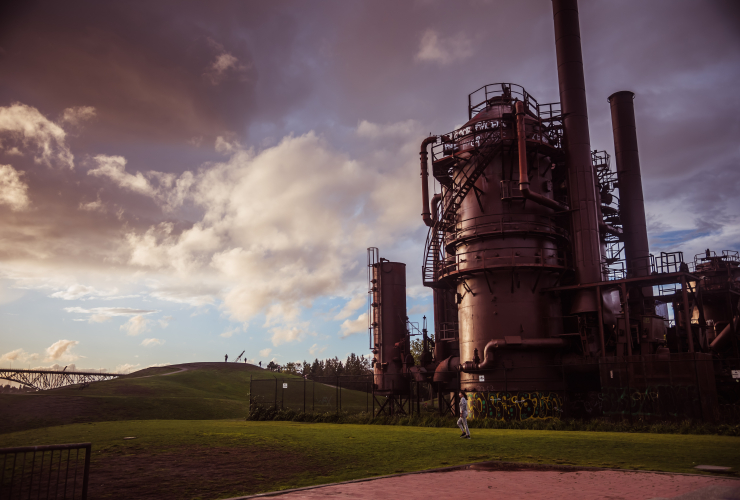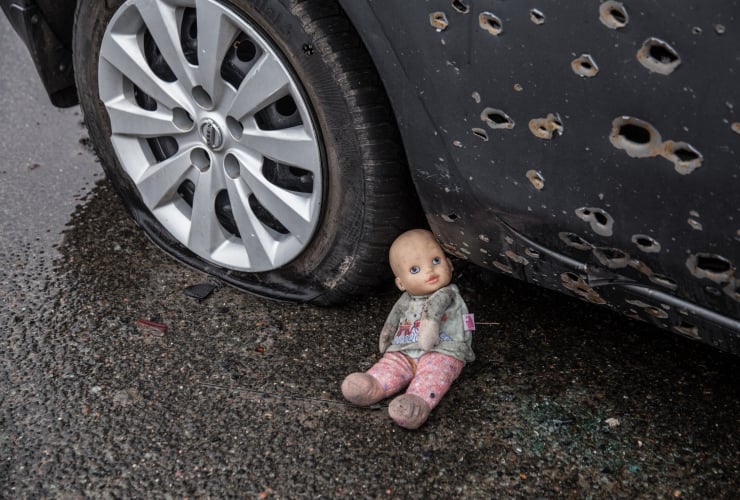Here’s a conundrum: on one hand, experts like Seth Klein and Chris Turner draw optimism from earnest national and international efforts to reduce carbon emissions. Turner cites “a global embrace of climate solutions that have done nothing for more than a decade but vastly exceed expectations. This is what winning — or at least starting to win — looks like.”
On the other hand, in March, the head of the IPCC (Intergovernmental Panel on Climate Change) issued the now famous “stark warning” that the world's fever is rising high enough to make trees more combustible. The panel said the Earth’s temperature has climbed to 1.1 degrees higher than pre-industrial times — approaching the 1.5 C increase widely accepted as the border beyond which lie severe environmental and ecological consequences.
This is no time to be complacent, said IPCC chair Hoesung Lee. “Any further delay in concerted global action will miss a brief and rapidly closing window to secure a livable future.”
Reinforcing the IPCC’s urgency, very soon, on Sept. 20, the UN is holding a global Climate Ambition Summit. The World Meteorological Organization has warned that the next five years are likely to be the hottest on record. UN secretary general António Guterres said: “The world is watching — and the planet can’t wait.”
Both sets of experts are correct, but they’re addressing different questions.
Authors Klein and Turner are measuring efforts; the UN and IPCC are measuring effects. In the past decade or so, most industrialized nations have indeed worked at reducing their carbon emissions, to whatever degree seemed feasible. The elephant in the room is that one nation hasn’t been able to cut back on emissions, through no fault of its own.
Ukraine has been ablaze for a year and a half. Every day and every night, Russia’s incessant bombardment of Europe’s second-largest nation has caused massive fires and devastation — for the last 19 months. Endless explosions and fuel-fed flames have ravaged large and small Ukrainian cities, leaving so many fires burning at any given time that on the Ecobot satellite’s live map, they look like bright stepping stones across the huge country.
As Ukraine suffers, suffering has increased everywhere else, too. Around the globe, fierce and voracious wildfires, hurricanes, tornadoes, floods and other natural catastrophes have dominated the news in 2023. Say their names and weep for the cities and countries hammered by weather and wildfire bombs: Lahaina, Maui; Turkey; Greece; Croatia; Italy; Spain; Portugal; Cyprus; Algeria; Tunisia; Morroco; Libya; Shuswap; Kelowna; Yellowknife — even barren Nevada was swamped by two months’ worth of rain just as 70,000 people congregated there for the Burning Man festival.
Most alarming of all, recently, ocean temperatures have risen sharply, disrupting global agriculture and increasing the ferocity of water-borne hurricanes bearing down on major cities already endangered by rising sea levels.
“In 2023,” according to the National Centers for Environmental Information, “there have been 15 confirmed weather/climate disaster events with losses exceeding $1 billion each” in the U.S. alone. “The 1980-2022 annual average is 8.1 events; the annual average for the most recent five years (2018-2022) is 18.0 events.”
Still, day after day and night after night, aggressive Russian bombing in Ukraine increases the world’s greenhouse gas (GHG) quotient by as much as another whole European country might produce — without any accountability or even discussion at climate talks.
Military emissions are not deliberately excluded from national and international climate reports. They’re left out because the military won’t provide the data. One result can be misleading statistics, showing GHG emissions decreasing when they aren’t.
For example:
“Since 1990, gross U.S. greenhouse gas emissions have decreased by just over two per cent,” according to the US Environmental Protection Agency (EPA) website. The EPA’s pie chart of GHG emitters includes four sectors: transportation, commercial and residential, industry, and agriculture. No “military” category there. And yet, most major environmentalists agree “the U.S. Defence Department is the worst polluter in the world,” as Elizabeth May has often said. Until now, that is.
“Climate Damage Caused by Russia’s War in Ukraine,” a document the Ukrainian delegation presented to COP27 last November, offered the first practical and comprehensive study of wartime GHG emissions caused by exploding bombs, military vehicles, drones and aircraft and everything from transporting more than half its 44-million population out of harm’s way to rebuilding demolished schools.
The report estimated the first six months of conflict caused 100 million metric tons of carbon emissions, mainly inflicted by Russian weapons and dust and debris from their chosen targets. After a full year of war, a second Ukrainian study upped the war emissions figure to 120 million metric tons, comparable to Belgium’s total annual national emissions.
While Ukraine’s sky is clouded by war, heavy grey clouds hang over cities all around the world as we all face an increased risk of sudden blazes or swirling megastorms. That’s why the UN’s Climate Ambition Summit sets out a do-or-die agenda that includes phasing out coal by 2030 and establishing a global phasedown of existing oil and gas production, compatible with the 2050 global net-zero target.
In June, noting a UN expert’s warning that “there is a ‘locked-in’ level of warming that is already causing unavoidable consequences,” UN deputy secretary general Amina Jane Mohammed asserted that it is still possible to limit the rise in global temperature to 1.5 C and avoid the very worst of climate change, but only, if we take a quantum leap in climate action.
“We cannot afford delays,” writes Ellie Kinney, military emissions expert for the British Conflict and Environment Observatory. “According to the IPCC, we have until 2030 to reduce global emissions by 43 per cent if we are to limit warming to around 1.5 C. Without immediate and deep reductions across all sectors — including militaries — 1.5 C will be beyond reach.”
Penney Kome is the author or editor of six books, including The Taking of 28: Canadian Women Challenge the Constitution. She has served as chair of The Writers Union of Canada (TWUC) and of Access Copyright, and as president of the Bain Apartments Co-op. She lives in Calgary with her husband of 36 years.






Comments